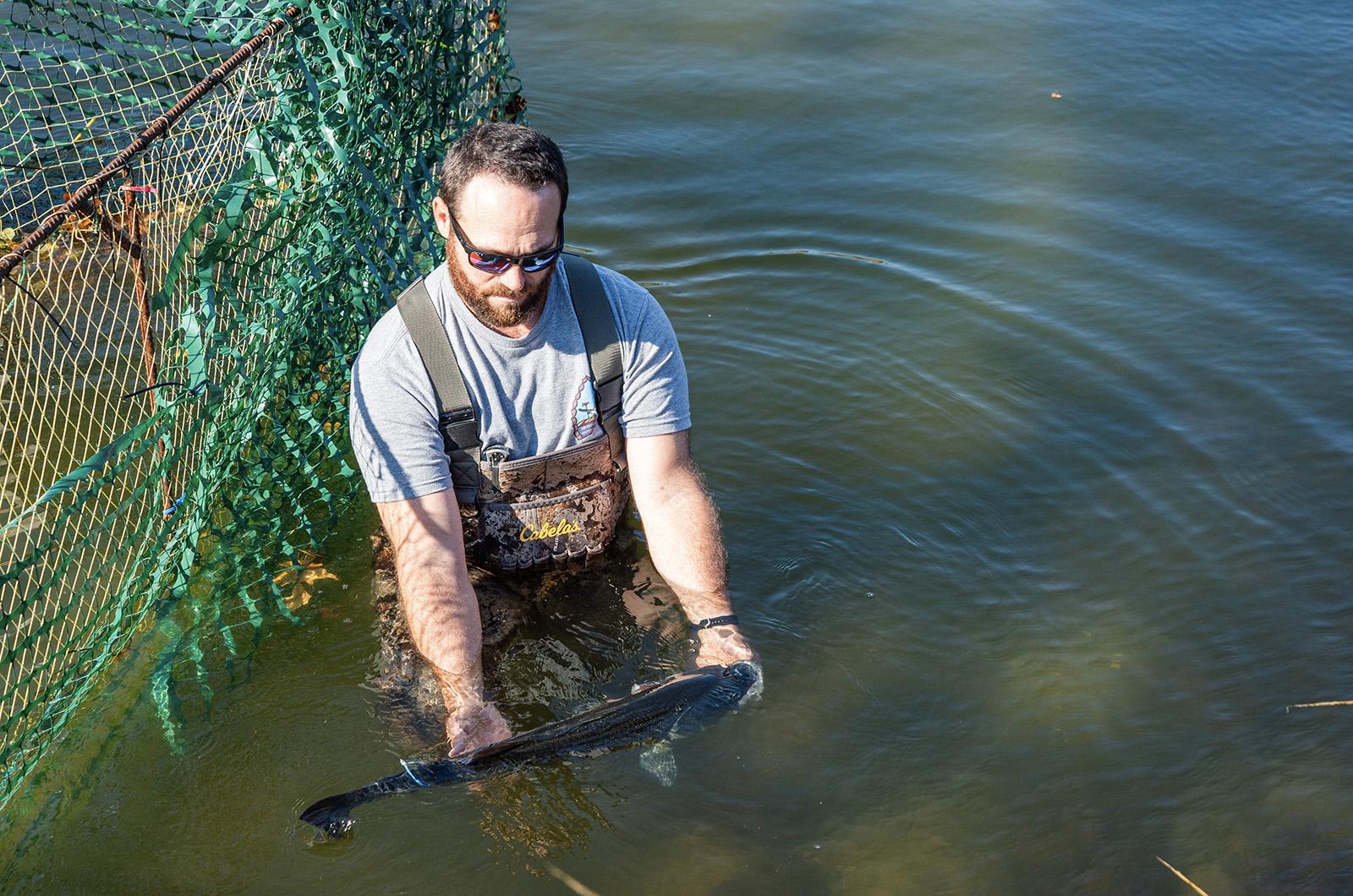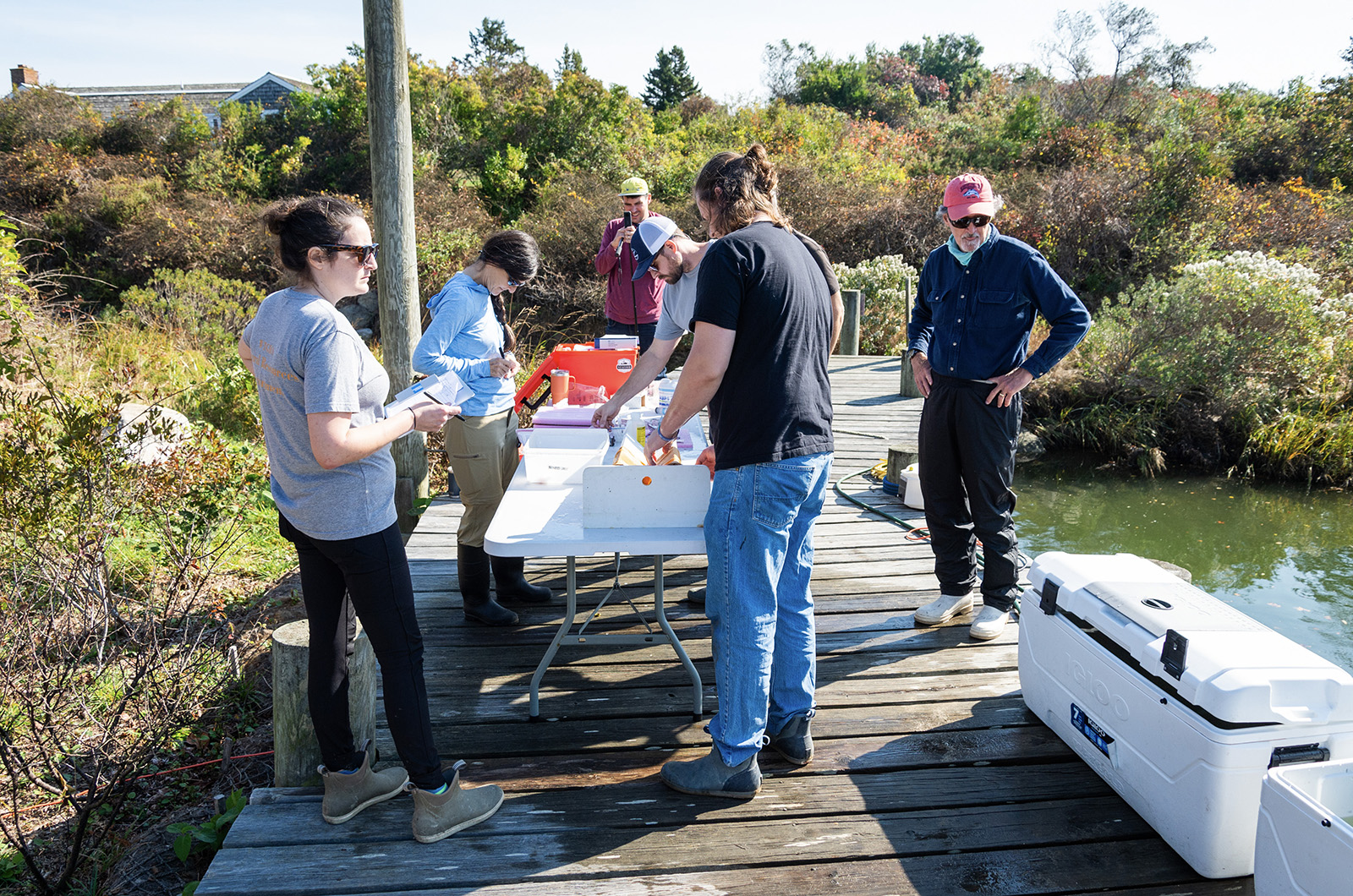Striped bass have become a focus of the Wampanoag Tribe of Gay Head (Aquinnah) Natural Resources department as it continues to study the decline of the herring population.
Herring, or alewives, are a major food source for striped bass, but the small fish have been in long decline in Island waters. The department believes the main culprit is from offshore trawling, however, overwintering by striped bass has recently caught their attention — not as a potential villain, but as a way to learn more about herring habits.
Bret Stearns, the indirect services administrator for the department, said in recent years striped bass are forgoing their migratory nature and staying year-round in the area.
The team was recently out in the field, in the murky waters of Herring Creek, looking to catch striped bass traveling between Squibnocket and Menemsha pond to surgically implant tracking devices.
Scott Bennett is the program manager of Striped Bass Initiative, an organization out of the Marine Biological Laboratory, located in Woods Hole. He was the primary tag implanter, gently bathing the fish in a clove solution that acts as an anesthetic before making a small incision in their belly for the diode and external tag. The bass were on the table for a maximum of 25 minutes, then put back in the water and rocked back and forth. When each fish woke-up it swam off in a flash.
Mr. Stearns said the department did a similar study last year with 20 striped bass. Nineteen stayed in the Island ponds. A lone striper swam south to Block Island.
Andrew Jacobs, the laboratory manager for the department, said the bass’ location can clue them into herring migratory patterns that could help the team’s preservation efforts.
“If [the bass] are conglomerating in one area during the height of the migration of the incoming herring, we’ll know that that’s an area that the herring are choosing to be that’s likely a spawning ground or a staging area for them,” Mr. Jacobs said.
Mr. Stearns said they used a Department of the Interior Bureau of Indian Affairs grant to help fund the project, which costs more than $100,000.
“That tells you how important [the project] is to us,” Mr. Stearns said.
The study will also help bridge connections between the department and other climate research groups, like Striped Bass Initiative. Mr. Bennett said he heard about the year-round population of striped bass on the Island from a Wampanoag student of his.
“It was serendipitous because we had just been discussing looking for an overwintering population that we could compare and contrast their seasonal and daily circadian behaviors and rhythms to our migrating partner,” Mr. Bennett said.
The department plans to expand the study next year, studying exactly where in the pond system striped bass are populating, and looking into what they are eating and how that impacts the watershed.
“As it comes to the protection of the herring, we need to understand the full picture,” Mr. Stearns said.
Mr. Jacobs emphasized that the loss of herring would be catastrophic for the Island’s ecology, economy and culture. The department reported less than 12,000 in the waters today.
“A hundred years ago, commercial harvest from Dukes County exceeded that of the entirety of the Commonwealth combined,” Mr. Jacobs said. “That’s how many herring were being taken commercially, and it was sustainable. Everyone was able to feed their families. Everyone was making money. It was a resource that no one ever thought would dwindle, and now here we are.”
The natural resources department requests that anyone who catches a striped bass with a visible tag, to take a photo of the fish, measure its length, identify the location and release it back to the water as soon as possible. Report the fish’s condition, along with the number written on the tag and photos, to fieldtech@wampanoagtribe-nsn.gov.










Comments (3)
Comments
Comment policy »